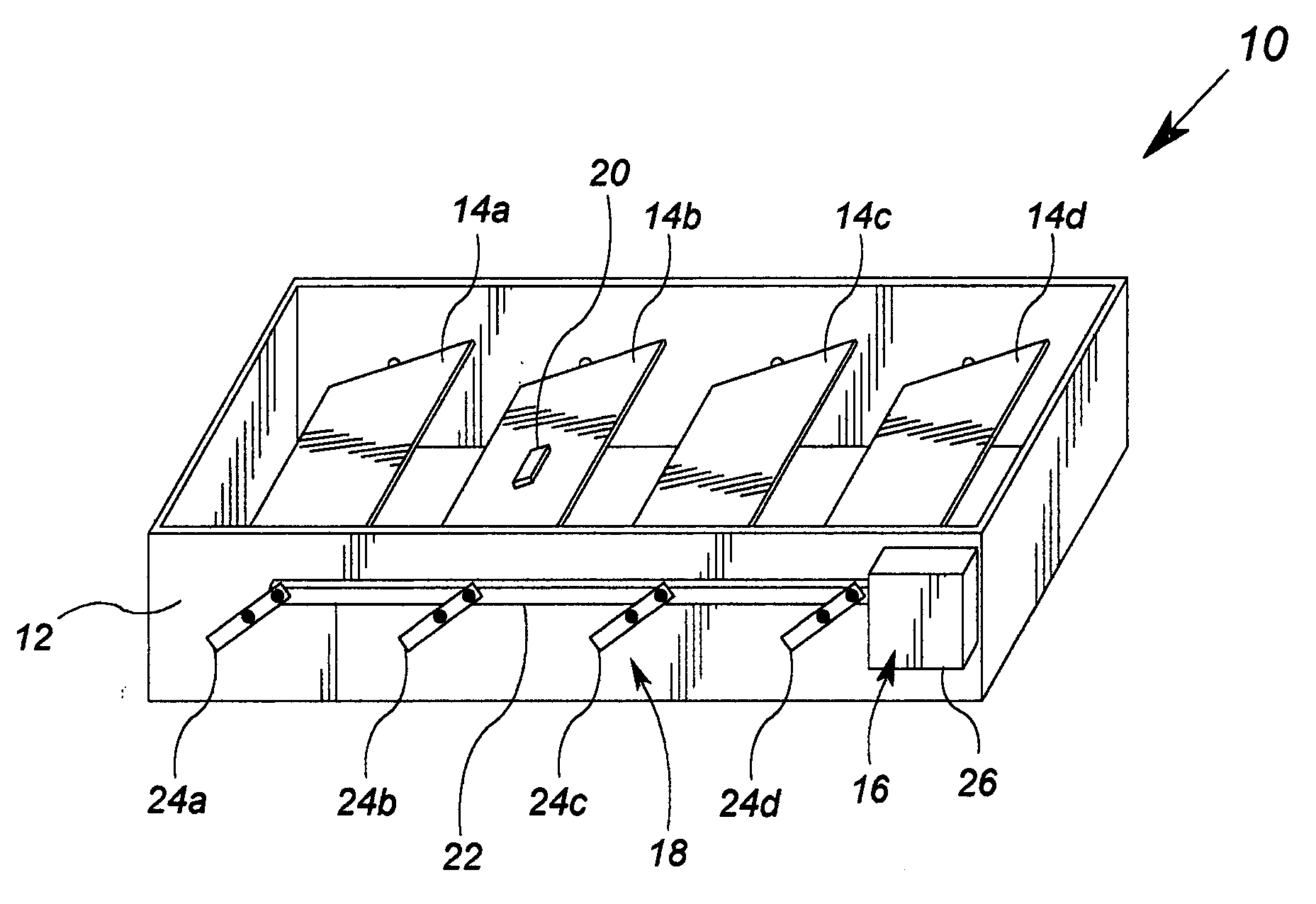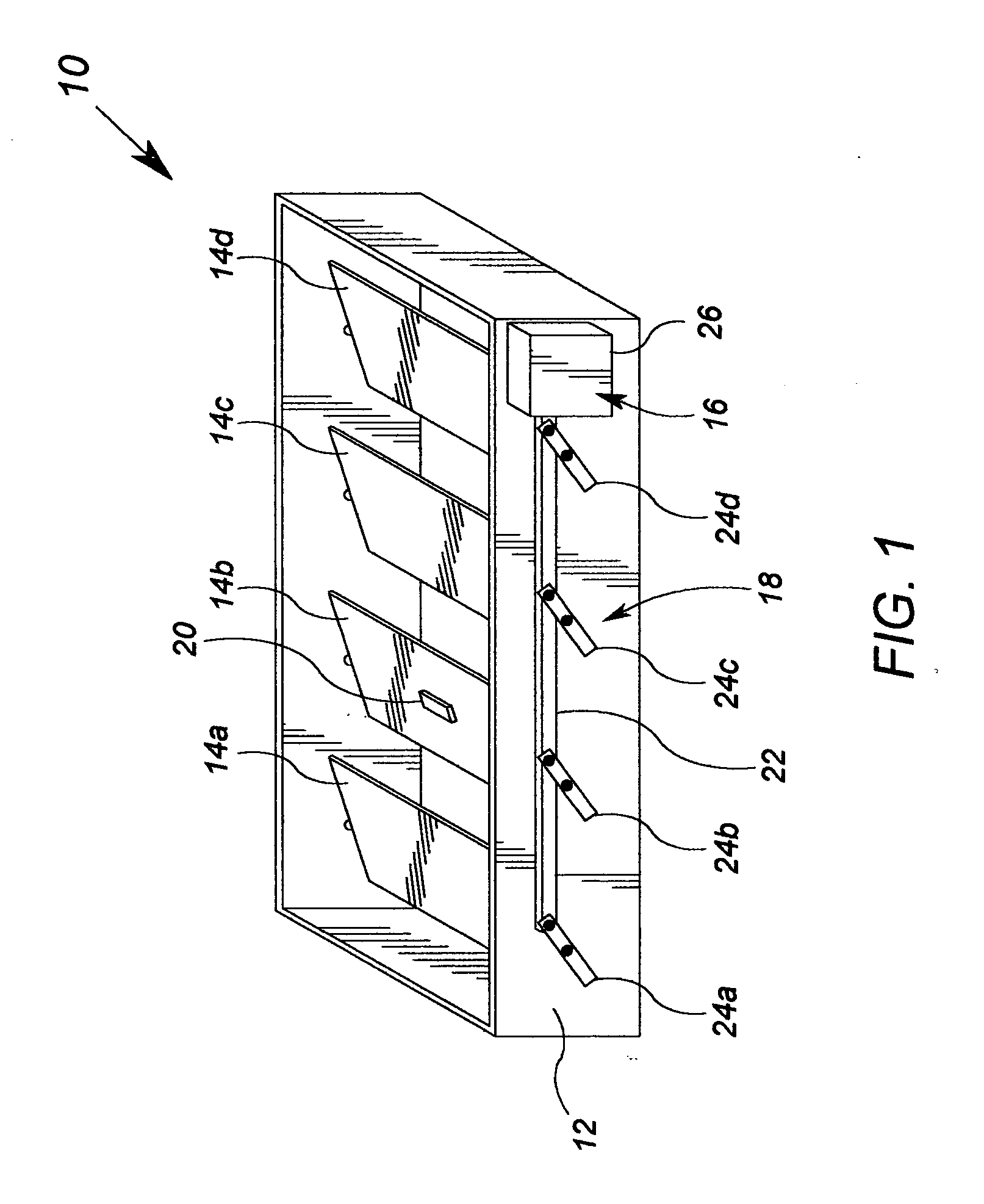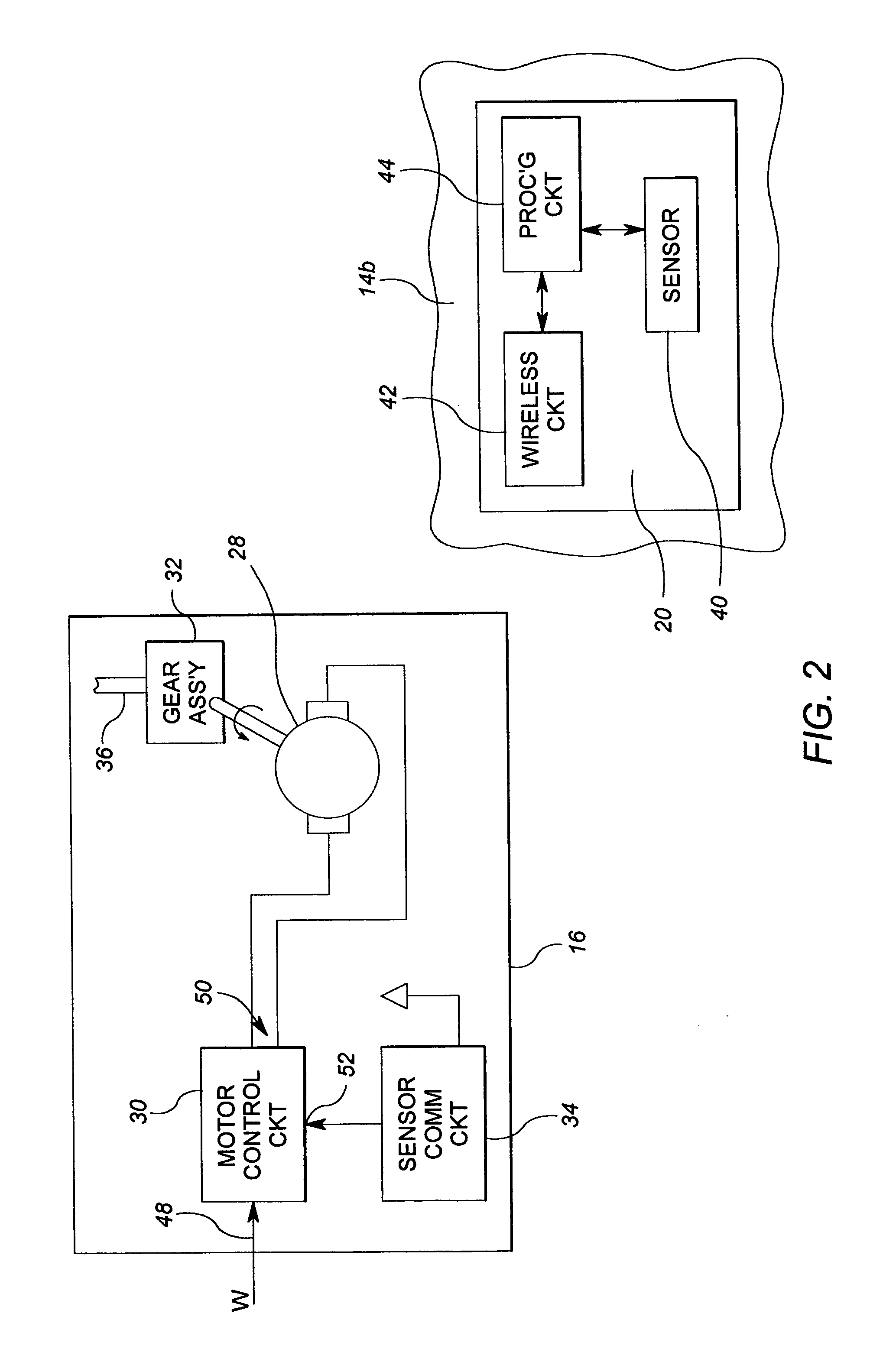Arrangement for detecting the position of a damper blade using a wireless communication sensor
a wireless communication and sensor technology, applied in the field of damper blade detection, can solve the problems of inability to reliably produce the level of accuracy that is necessary, inefficiency of further opening the damper that is fully open, and damage to the vav unit, so as to remove inaccuracy
- Summary
- Abstract
- Description
- Claims
- Application Information
AI Technical Summary
Benefits of technology
Problems solved by technology
Method used
Image
Examples
Embodiment Construction
[0020]FIG. 1 shows a perspective view of an exemplary damper assembly 10 according to the present invention. The electrical components of the damper assembly 10 are illustrated in FIG. 2. Reference is made simultaneously to FIGS. 1 and 2 in the ensuing description. The damper assembly 10 may be employed as a VAV unit.
[0021] The damper assembly includes a damper frame 12, a plurality of damper blades 14a, 14b, 14c, and 14d, an actuator module 16, a linkage assembly 18, and a sensor module 20. The damper frame 12 is a housing for a ventilation damper, which may suitably take the form of any housing for an HVAC ventilation damper or variable air volume (“VAV”) unit. The plurality of damper blades 14a, 14b, 14c and 14d are movably attached to the damper frame 12 to at least partially regulate air flow proximate the damper frame 12. To this end, each of the damper blades 14a, 14b, 14c and 14d may rotate about its own longitudinal axis between a closed or nearly closed position and vario...
PUM
 Login to View More
Login to View More Abstract
Description
Claims
Application Information
 Login to View More
Login to View More - R&D
- Intellectual Property
- Life Sciences
- Materials
- Tech Scout
- Unparalleled Data Quality
- Higher Quality Content
- 60% Fewer Hallucinations
Browse by: Latest US Patents, China's latest patents, Technical Efficacy Thesaurus, Application Domain, Technology Topic, Popular Technical Reports.
© 2025 PatSnap. All rights reserved.Legal|Privacy policy|Modern Slavery Act Transparency Statement|Sitemap|About US| Contact US: help@patsnap.com



